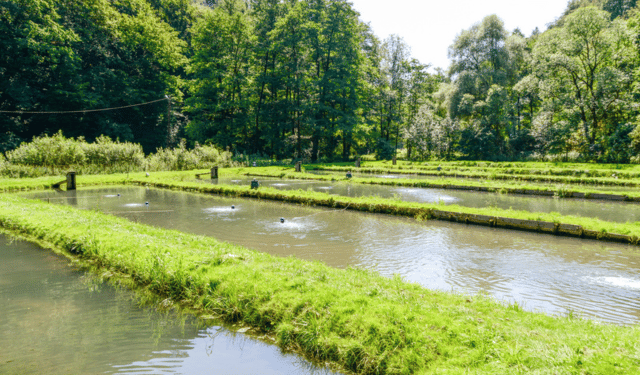Fish farms, differences between intensive, extensive and semi-extensive – When we are standing in line at the fishmonger’s counter, we often hear phrases like: ‘These sea breams are sea farmed!’ But what exactly does that mean? Is it not natural that sea bream live in the sea? Could this information be an indication of quality or simply a part of the breeding process? Is the operator suggesting that sea-farmed sea bream are better than caught sea bream or land-farmed sea bream? To avoid confusion and answer these questions, we must start with the differences between the various types of fish farms.
Aquaculture is a practice that originated thousands of years ago, with the earliest traces dating back to the Neolithic period. Already during the Roman Empire, this practice was widespread throughout the Mediterranean, with a focus on mollusc and fish farming in lagoons.
Roman lagoons were used for the production of oysters and other species such as sea bass, gilthead bream, moray eels and eels. The latter, in particular, were kept alive in tanks called ‘murenari’. The extensive farming of these animals was a real delicacy for the wealthy classes of the time. Moreover, other historical evidence shows that many Apulian villas were equipped with indoor pools, used for fish breeding.
Over the millennia, aquaculture has undergone a strong evolution, today covering more than 50% of the world’s fish production. It is an ever-expanding sector, thanks to increasingly efficient farming techniques.
Today, we can distinguish between marine and freshwater aquaculture, depending on the habitat where production takes place. Another important classification concerns the type of human intervention required, with three main modes of farming: intensive, semi-extensive and extensive.
Intensive farming
Intensive farming is often characterised by a high density of fish in confined spaces, with human-supplied feed. This type requires constant monitoring of environmental parameters to ensure optimal conditions for fish health and growth, sometimes using drugs and chemicals to prevent disease, with the aim of maximising production in a controlled environment.
Extensive farming
Extensive farming is the oldest form of aquaculture. Fish are reared in large bodies of water, such as lagoons or coastal valleys, without the use of feed or outside intervention. The animals feed exclusively on the natural resources in the environment. The farming of bivalve molluscs, such as mussels and oysters, also falls into this category, as they feed by filtering sea water.
Semi-extensive farming
Semi-extensive farming lies somewhere between intensive and extensive. The fish are reared in natural environments, but the diet is supplemented with additional feed in addition to what the local ecosystem provides.
Since ancient times, fishermen have exploited the natural tendency of certain fish species to migrate to coastal areas, attracted by the greater availability of food and more favourable conditions. In the past, coastal valleys and reservoirs were used to harvest fish when they became mature and returned to the open sea. This principle is the basis of extensive aquaculture, which requires minimal human intervention.
Aquaculture, with its long history and continuous evolution, now plays a key role in global food and fish stock management. It is essential that the expansion of this sector takes place with a watchful eye towards sustainability.
Fish quality, animal welfare and healthy marine ecosystems are all sides of the same coin. Only through conscious choices can we ensure a future in which fish continue to be a valuable and inexhaustible resource.
Fish farming, differences between intensive, extensive and semi-extensive









